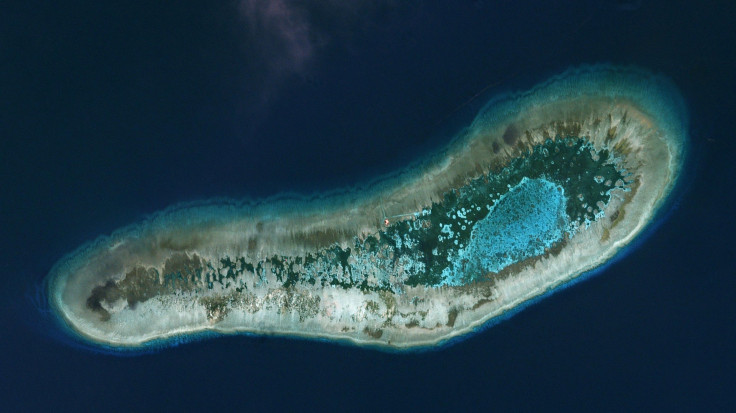South China Sea Conflict: Vietnam Dredging Work Prompts US Warnings, Fears Over China's Response

A political battle in Asia over control for an important trade route in the South China Sea is heating up, with Vietnam taking steps to dig a channel between a lagoon and the open sea in the disputed territory. The dredging work is Vietnam's latest step toward defending its stake to the strategic waterway also claimed by China, Malaysia, the Philippines, Taiwan and others, Reuters reported Friday.
The construction work on Ladd Reef includes a lighthouse and outpost housing used by a small group of Vietnamese soldiers, according to an image taken on Nov. 30 by U.S.-based satellite firm Planet Labs. Vessels can be seen in the channel.
"We can see that, in this environment, Vietnam's strategic mistrust is total ... and they are rapidly improving their defenses," Trevor Hollingsbee, a retired naval intelligence analyst with Britain's defense ministry, told Reuters. "They're doing everything they can to fix any vulnerabilities - and that outpost at Ladd Reef does look a vulnerability."
Vietnam could be working toward using the Ladd Reef as a post for supply ships and fishing boats, said Greg Poling, a South China Sea expert at Washington's Center for Strategic and International Studies. Vietnam previously sought in August to add mobile rocket artillery launchers capable of attacking China on its territory in the South China Sea, through which some $5 trillion in world trade is shipped every year.
But China likely wouldn't be satisfied by such an explanation. Beijing has added more than 3,200 acres of land outfitted with runways, ports and aircraft hangars in the South China Sea since 2013. China has said it has the right to build "limited and necessary self-defensive facilities" on its territory.
The U.S. has essentially asked Vietnam to cool down its efforts to avoid conflict.
"We’ve consistently warned that reclamation and militarization in contested areas of the South China Sea will risk driving a destabilizing and escalatory trend," said Anna Richey-Allen, spokeswoman for the U.S. State Department. "We encourage all claimants to take steps to lower tensions and peacefully resolve differences."
But Washington also announced in September it would hold joint training patrols with Japan in the contested South China Sea to "contribute to the security and stability of the region," a move that angered China.
Others have argued that it's not the U.S.' place to tell Asia how to handle its disagreement over who control the South China Sea.
"Americans often assume that Chinese military aggression is increasing the likelihood of a clash between China and the United States. But many policy makers in Washington ignore that Beijing has good reason to be troubled by the United States’ military footprint in its neighborhood," wrote Nicholas Borroz, a strategic intelligence consultant, and Hunter Marston, an independent Southeast Asia analyst, in the New York Times in October. "As the United States military doubles down in Asia, the chances increase that one side will cross a red line. It is easy to imagine, for instance, that China could respond with force to joint American-Japanese naval patrols. That does not mean Washington should abandon its allies. But it should avoid creating extensive, untenable defense agreements."
© Copyright IBTimes 2024. All rights reserved.






















